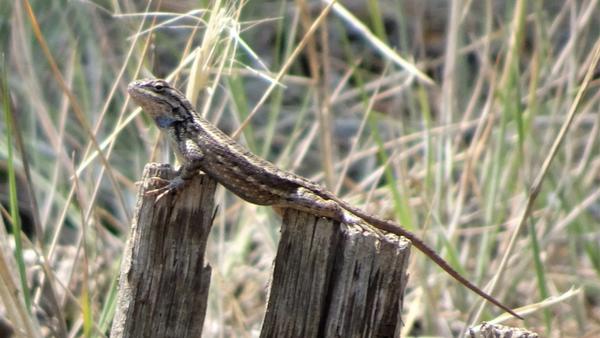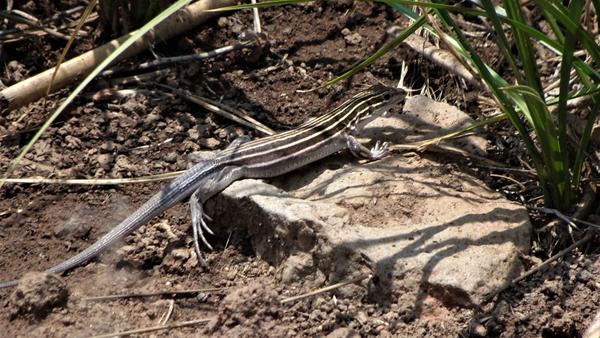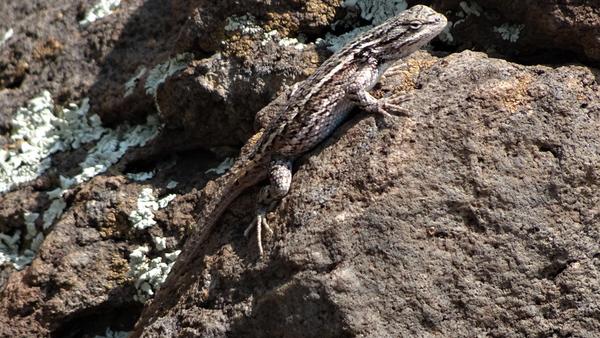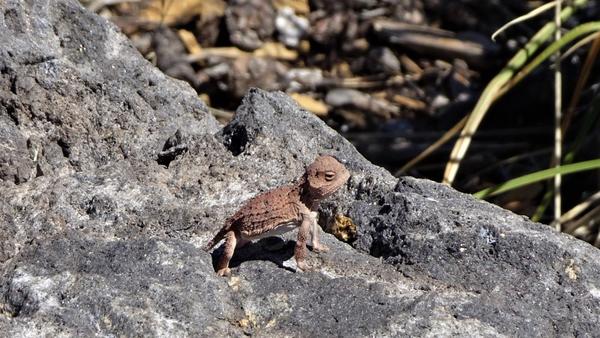Something a Little Different
Cameron Barrows takes a tripFor a bit of a change, I’m writing this installment from the Colorado Plateau of northern Arizona. The Plateau, as its name suggests, is a predominantly flat, high elevation landscape, averaging maybe 6,000’ or so. A bit north of here this otherwise flat landscape is scared by a colossal mile-deep hole in the ground called the Grand Canyon.
However, where I sit, I am looking at a massive 12,613’ volcano, called the San Francisco Peaks, a true sky island, and just a bit easier to pronounce than the original Hopi name, Nuvatukya’ovi, or Navajo name Doko’oo’sliid. All the local indigenous people still consider it to be a sacred place, a place they could see from maybe 100 miles away that historically gave them a landmark on the horizon to let them know where they are, a source of obsidian for tool making, cool breezes, and water on this otherwise flat and warm landscape. Calling this volcano the “Peaks” is the result of an event that occurred probably more than 100,000 years ago when the top of the volcano collapsed, leaving a jagged rim, which today each of the remaining high points are named after early homesteaders, (Humphreys – the tallest point), scientists (Agassiz – the second highest), or explorers (Fremont), and so collectively referred to as the “Peaks”. Prior to the collapse, the volcano was probably 4,000’ higher making it then somewhere between 16,000-17,000’ high. The most recent eruption was just a few miles to the east of the Peaks, 930 years ago, an event that was witnessed by the Sinagua-Hopi people and is part of their oral history.
The Colorado Plateau rises out of the creosote bush and saguaro-studded Sonoran Desert to the south, rising through a pinyon-juniper forest to the Plateau’s rim where ponderosa pines dominate until the relatively abrupt rise of the Peaks. Then limber pines, Douglas fir, and quaking aspen take over until a few hundred feet from the highest peaks, which are above tree line. One of the early scientists to visit the Peaks was C. Hart Merriam. Wikipedia describes Merriam as a zoologist, mammologist, ornithologist, entomologist, ethnographer, geographer, and most importantly, a naturalist. At 16 years old Merriam was hired on to serve a naturalist on the Hayden Geological Survey of 1871. That beats Darwin who at 22 joined the Beagle expedition. The Hayden Survey explored Utah, Colorado, and Wyoming, including Yellowstone. After returning home, Merriam finished his education, but never stopped exploring. In 1889 Merriam spent time discovering and describing the life of the San Francisco Peaks. If his name sounds familiar, many animals were named after him, including the most abundant and widespread rodent in our desert, Merriam’s kangaroo rat.
While at the Peaks, Merriam developed his ideas about distinct life zones, that both reflect the changing landscapes as one goes from lower to higher latitudes, and that are replicated on the slopes of mountains. Throughout the Pleistocene successive warming and then cold (ice ages) periods pushed animals and plants southward where some found refuge on those mountains. That is the reason we have lodgepole and limber pines on San Jacinto Peak, and why limber pines, bristlecone pines, and Douglas fir have found sanctuary on the San Francisco Peaks. Merriam’s life zones included the: Lower Sonoran – the land where creosote bush is dominant; Upper Sonoran – chaparral, sagebrush, and junipers; Transition – ponderosa pines; Canadian – fir forests; Hudsonian – spruce and bristlecone pines; and Alpine – above tree line where lichen is king. Those of you who have rode the Palm Springs aerial tramway have heard Ed Kibbey’s recorded voice paraphrase this life zone concept by saying that in the 10 minute tram ride you have traveled the ecological equivalent of going 1000 miles or more north into Canada.
Like the Coachella Valley, this is a hiker’s paradise. Except summer is the best time to hike here, rather the winter and spring in the Coachella Valley. However, it does take a bit of time to get acclimated to the thinner air at 7,000’ and above. Of course, I am always looking for lizards. Here there is an ecological parallel between the high elevation lizards of the mountains surrounding the Coachella Valley. Back home we have southern sagebrush lizards, Sceloporus vandenburgianus, which occupy elevations from around 6,000’ (sometimes down to 5,000’) to up around 9,000’ at the top of the tram. Here there is the plateau lizard, Sceloporus tristichus, occurring from above 5,000’ to over 7,000’. We hiked the Kachina trail yesterday which stayed just under 9,000, but never saw a lizard. I need to find a trail that spans 7,000-8,000’ to find just how high they go.
Another lizard occurring at least up to 7,000’ is the plateau striped whiptail, Aspidoscelis velox. Whereas in California we have two whiptail species (western/tiger and orange throated, found closer to the coast), in Arizona there are 12 whiptail species. The curious thing is this species is one of six of those whiptail taxa that are all-female, reproducing parthenogenically. Those six are the result in hybrid encounters between two different sexually reproducing species. But rather than producing sterile “mules” (like from horse-burro encounters), these lizard dalliances result in all females – but still capable of non-sexual reproduction – that are all clones of their mothers. These parthenogenic species are often abundant, so they are successful, but the question then is will they have the genetic diversity necessary to handle dramatic changes to their habitats from something like climate change?
For me, the most exciting sighting was the greater short-horned lizard, Phrynosoma hernandesi, and a lifer for me (a species I have never seen before). Greater short-horned lizards have a huge distribution (but they don’t occur in California), heading north into Idaho, the Dakotas and into Canada, tracking Merriam’s Transition-Canadian life zone. Unlike most other horned lizards, they do not lay eggs, but give birth to live young (like most of the night lizards I described last week). They can give birth to as many as 48 neonates at a time (can’t call them hatchlings if they don’t come from eggs) that are no more than an inch long. I was fortunate to find a neonate as well. Live birth is more common in lizards with high elevation and/or northern distributions; moms can relegate their body heat by moving in and out of sun and avoid freezing from late season cold snaps. The Hopi, Navajo and others had a special reverence for these horned lizards, often including their petroglyph images. Apparently, they viewed the horned lizards as symbols of strength, self-reliance, longevity, and perseverance. I can see all of that.
Finally, I wanted to thank those of you who suggest additional books for summer reading. I am particularly intrigued by one suggestion: “Sex on the Kitchen Table” written by Norman C Ellstrand who is a distinguished professor of botany and genetics at UCR. I need to track that one down.
Stay safe, stay healthy and get outside.




